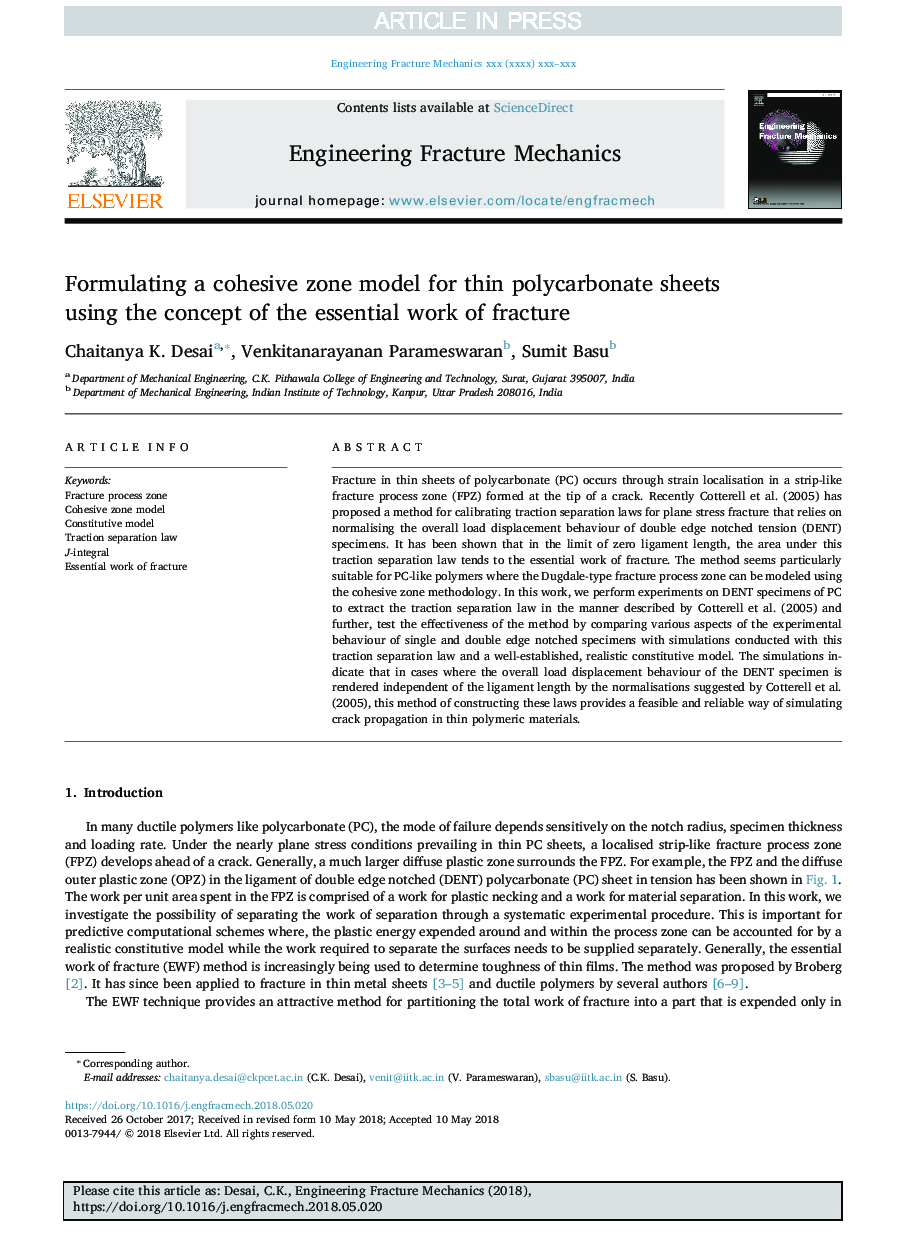| Article ID | Journal | Published Year | Pages | File Type |
|---|---|---|---|---|
| 10140203 | Engineering Fracture Mechanics | 2018 | 13 Pages |
Abstract
Fracture in thin sheets of polycarbonate (PC) occurs through strain localisation in a strip-like fracture process zone (FPZ) formed at the tip of a crack. Recently Cotterell et al. (2005) has proposed a method for calibrating traction separation laws for plane stress fracture that relies on normalising the overall load displacement behaviour of double edge notched tension (DENT) specimens. It has been shown that in the limit of zero ligament length, the area under this traction separation law tends to the essential work of fracture. The method seems particularly suitable for PC-like polymers where the Dugdale-type fracture process zone can be modeled using the cohesive zone methodology. In this work, we perform experiments on DENT specimens of PC to extract the traction separation law in the manner described by Cotterell et al. (2005) and further, test the effectiveness of the method by comparing various aspects of the experimental behaviour of single and double edge notched specimens with simulations conducted with this traction separation law and a well-established, realistic constitutive model. The simulations indicate that in cases where the overall load displacement behaviour of the DENT specimen is rendered independent of the ligament length by the normalisations suggested by Cotterell et al. (2005), this method of constructing these laws provides a feasible and reliable way of simulating crack propagation in thin polymeric materials.
Keywords
Related Topics
Physical Sciences and Engineering
Engineering
Mechanical Engineering
Authors
Chaitanya K. Desai, Venkitanarayanan Parameswaran, Sumit Basu,
